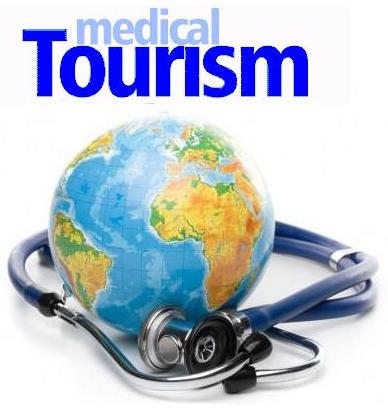As Kazakhstan develops its medical competence, with advances in bariatric, cardiac and neurosurgery in the last few years, as well as laser eye surgery and general transplant surgery, a trickle of medical tourists are being drawn to the country.
 Until recently, it would have been more likely to see Kazakhs travel abroad for medical care, and indeed, countries like India, Malaysia, South Korea, Israel and others are still courting the Kazakh market. But travellers seeking treatment in Kazakhstan are also on the rise. In December, the Ministry of Health and Social Development announced that patients from a significantly increased number of countries are being treated in Kazakhstan.
Until recently, it would have been more likely to see Kazakhs travel abroad for medical care, and indeed, countries like India, Malaysia, South Korea, Israel and others are still courting the Kazakh market. But travellers seeking treatment in Kazakhstan are also on the rise. In December, the Ministry of Health and Social Development announced that patients from a significantly increased number of countries are being treated in Kazakhstan.
As Tengrinews reported on Dec. 8, Director of the Medical Aid Management Department of the Ministry of Health and Social Development Gulnar Kulkayeva said the most popular services provided to foreign patients in 2013 were microsurgical removal of spinal herniated discs, in-vitro fertilisation, heart valve surgery and treatments for uterine fibroids and adenomyosis.
Subsidiaries of the country’s public-private National Medical Holding have seen a rise in patients from the United States, Japan and Italy, she said, whereas foreign patients previously only came from Russia and Kyrgyzstan. Eight hundred and thirty-two foreign nationals were treated in National Medical Holding clinics in 2013, she said. The number includes foreigners working in Kazakhstan, so it is unclear how many actually travelled to Kazakhstan for care and how many simply chose to receive care in Kazakhstan rather than leave.
Most foreign patients, 260, came from the U.K., according to the ministry. The U.S. followed with 111, Kyrgyzstan with 51, Turkey with 50, Russia with 44, and others from Bulgaria, Sri Lanka, the Philippines and 23 other countries.
Low cost as well as increased quality would seem to be a driver of medical tourism to Kazakhstan. Per the Tengrinews story, the Ministry of Health and Social Development reported that bone marrow transplants, at $51,000 in Kazakhstan, cost half as much as they do in Russia, and kidney transplants at $16,000 cost less than half that in Kazakhstan’s northern neighbour. Liver transplants at $20,000 are much cheaper in Kazakhstan than they are in Turkey, a country that itself attracts medical tourists.
In addition to medical tourism, wellness or health tourism is also poised to grow. Kazakhstan’s new official tourism website, kazakhstan.travel, promotes traditional cures like kumyss therapy, mineral and other water treatments and traditional medicine treatments including deer antler therapy.
Pantotherapy – the therapeutic use of deer-antler velvet and extract – is being developed as part of a tourism destination project in Northern Kazakhstan’s Aiyrtau district. A new medical centre there, which opened in June, will use velvet harvested from the maral, a type of large deer native to Kazakhstan. The deer are farmed in the areas and the species is generally widespread.
The antlers contain biologically-active substances as well as female sex hormones and have been used in traditional eastern medicine for thousands of years. The antlers are used to treat a variety of conditions, including sexual dysfunction, the effects of menopause, liver and kidney problems and a host of others. Deer antler has recently been in vogue as a performance-enhancing substance among some athletes. The new medical centre anchors a tourism cluster in Northern Kazakhstan, part of the country’s efforts to develop pockets of tourism destinations in the regions.
Kazakhstan has a long way to go before catching up to global medical tourism hubs like Costa Rica, India, Thailand and South Korea. Global statistics on the number of medical tourists worldwide are hard to come by, but the Patients Beyond Borders website estimates that Thailand attracted up to 1.8 million medical tourists in 2013, and Malaysia 600,000 in 2012. India serves some 250,000 annually, it reports. Closer to home, Turkey is reported to have hosted 110,000 foreigners seeking medical treatment in 2012, and its wellness tourism industry of thermal and mud spas attracts half a million visitors per year.
Kazakhstan’s 800 or so patients are, comparatively, a drop in the bucket. However, for a country still in the early stages of developing both tourism and high quality medical care, with new direct flights being added each season and with the possibility of offering better care than some neighbours and cheaper care than others, the sector would certainly seem to hold some promise.


